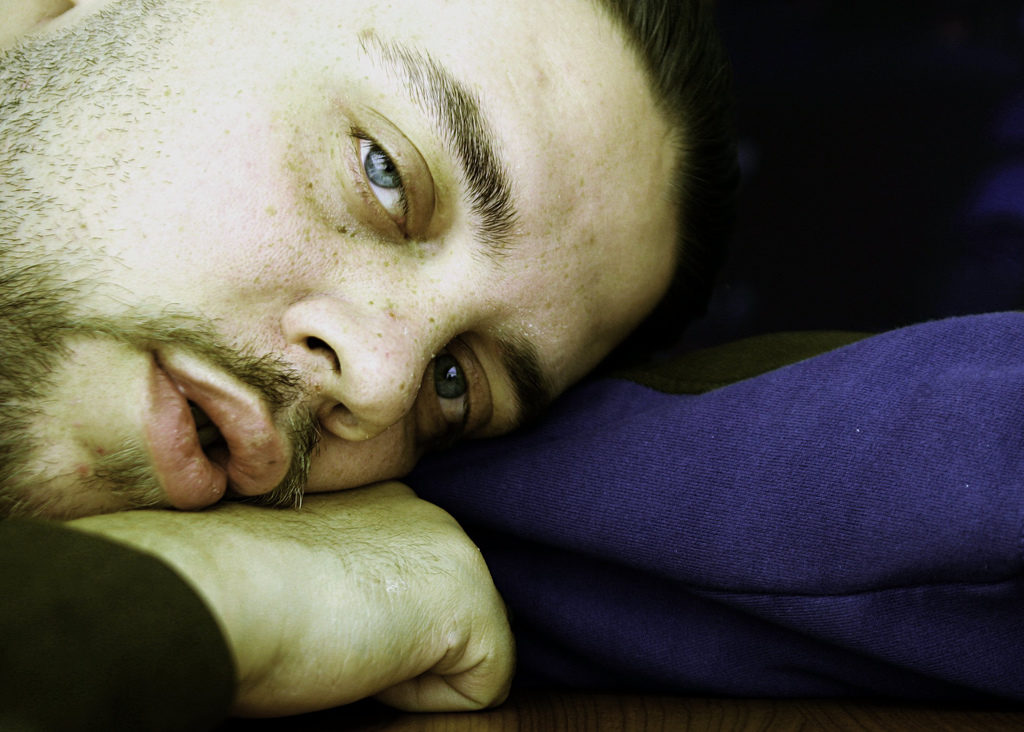
It is well recognised that schizophrenia is a chronic and severe mental illness with periods of remission and relapse and risk for chronicity increasing after each psychotic relapse (Emsley et al, 2013). Antipsychotic medications play a key role in the treatment of acute symptoms and in maintaining remission (Boonstra et al, 2011). Furthermore, the societal cost of schizophrenia in England is estimated at £11.8 billion per year, with a cost to the public sector of £7.2 billion; this accounts for 4.5% of gross domestic product (Davies, 2013).
The authors of a recent systematic review (Zhu et al, 2017) argue that the treatment choice in the first episode of schizophrenia is often controversial. Therefore adding to the knowledge base by providing guidance on the effectiveness and tolerability of antipsychotic medications may assist prescribers in providing optimal treatments for patients.

For most people who are diagnosed as having schizophrenia, the first episode will be the start of lifelong drug treatment.
Methods
The aim of this new systematic c review was to assess the effectiveness and tolerability of first and second generation antipsychotic medication, using pairwise and network meta-analysis analysis in first episode of schizophrenia (Zhu et al, 2017).
The primary outcome measure was overall change in symptoms, with secondary outcomes including changes in positive and negative symptoms, response to treatment, study dropout and tolerability (including weight gain, parkinsonian symptoms, sedation, prolactin and overall functioning) and quality of life.
Zhu et al (2017) included 19 randomised controlled trials in their review, including 12 double blind, three single blind and four open label studies. The total number of antipsychotics studied was 12 and the total number of participants was 2,669.
Out of the 19 studies, 11 assessed the effectiveness of haloperidol, 13 of risperidone, seven of olanzapine, four of quetiapine and one of each of the following: ziprasidone, zuclopenthixol, molindone, flupenthixol, pimozide, aripiprazole, amisulpride and sertindole. Trial duration ranged from 4-13 weeks.
Results
- No significant difference to treat positive symptoms of psychosis were found between treatments, and with the exclusion of open label studies – olanzapine showed superiority over haloperidol and quetiapine. Changes in doses of haloperidol or risperidone did not impact on the overall efficacy of treatment
- Olanzapine was significantly superior to haloperidol and risperidone in treating negative symptoms
- Olanzapine and quetiapine were associated with less use of medication to treat parkinsonian side effects than haloperidol, zuclopenthixol and risperidone. Use of higher doses of haloperidol were associated with more frequent use of anti-parkinsonian drugs
- Quetiapine was associated with less akathisia than haloperidol, risperidone, aripiprazole, and olanzapine
- Quality of life was not addressed in most studies and where data was available no differences in quality of life were found between the study drugs
- Haloperidol was the leading medication for all cause discontinuation
- Increases in prolactin were highest for participants treated with risperidone, however no data was available for amisulpride and paliperidone
- Quetiapine was associated with less sedation than risperidone and aripiprazole.

This study confirms what we know from previous research, that haloperidol is poorly tolerated in first-episode schizophrenia.
Limitations
Haloperidol was the only first generation antipsychotic medication used most frequently as a comparison pairwise analysis, in 12 studies. Second generation antipsychotics that were used more frequently in comparison were olanzapine (8 studies), risperidone (12 studies) and quetiapine (5 studies). Conclusions regarding efficacy and tolerability of seven medications were based on single studies, with single zuclopenthixol study only including 13 participants. The high variability relating to number of studies and participants per drug suggests that the results may treated with caution. Studies with small sample sizes may have also reduced reliability as the population may be not representative of the general population of patients with first episode schizophrenia.
Number of studies and participants per medication
| Medication | Number of studies | Total number of participants per medication |
| Risperidone | 12 | 704 |
| Haloperidol | 12 | 641 |
| Olanzapine | 8 | 564 |
| Quetiapine | 5 | 339 |
| Ziprasidone | 2 | 102 |
| Aripiprazole | 1 | 106 |
| Amisulpride | 1 | 104 |
| Molindone | 1 | 40 |
| Flupenthixol | 1 | 23 |
| Pimozide | 1 | 23 |
| Sertindole | 1 | 13 |
| Zuclopenthixol | 1 | 10 |
- There were differences in the characteristics of participants across the studies. This included the duration of psychosis which ranged from two weeks to five years. In addition, the duration of untreated psychosis was not always stated, and where it was this ranged from 52-62 weeks
- The numbers of patients for each drug were small, reducing the generalisability of findings
- The severity of illness assessed at the start of the study was variable, ranging from a mean of 50.3 to 92.3 in PANSS scores, where stated. The severity of illness may have impacted on the assessment of efficacy of treatment, with participants with higher severity of illness expected to benefit more from treatment
- Short treatment durations, starting from only 4 weeks, may result in fewer side effects being reported, than studies that were of longer duration
- First episode patients may be drug naïve, and therefore more likely to be treated with lower doses of medication. All participants were in the acute stages of illness and some were also drug naive, therefore it is likely that their knowledge of drug side effects and their ability to communicate them was limited, resulting in under reporting
- The authors report that a definition of first episode of schizophrenia was formulated by study authors, however it is not provided for the reader. The majority of the studies included in the review are with participants who have a diagnosis of schizophrenia (either according to DCM –IV or ICD 10), with Zhu et al (2017) providing different definitions of first episode depending on individual studies, from drug naïve, to varying duration of episode, or simply “first episode schizophrenia”. This suggests large variability of the included sample, which impacts on the validity of results.
Zhu et al (2017) excluded studies which included patients with treatment resistant schizophrenia, and studies that examined the efficacy of depot formulations, explaining that depot antipsychotic injections are used for treatment of relapse prevention in long-term patients, which were not the focus of the review. However, they included studies where participants had continuous episodes of up to five years, which suggests that a degree of treatment resistance could be present. Gillespie et al (2017) suggest that treatment-resistant patients are a categorically different subtype of schizophrenia patients, and the National Institute of Health and Care Excellence (NICE, 2014) advise that treatment resistance can be assessed once two adequate trials of antipsychotic medications have been made. Thus, it appears that a continuous episode of five years would warrant a trial of at least two different antipsychotic medications. Demjaha et al (2017) also found that 23% of all patients that present with psychosis developed treatment resistant schizophrenia, and that 84% of patients that have treatment resistance, experience it from the initiation of treatment. This means that despite efforts to excluded treatment resistant participants in the review, it is likely that some were included in the study before their lack of response had been clinically confirmed.
The exclusion of depot formulations in the review suggests that a proportion of studies may not have been included in the analysis, as it is recognised that depot medication although used much less frequently is also used in first episode patients (Bioque, 2016). It is also likely that patients presenting in the acute stages of illness are administered medication for rapid tranquillisation (Shahpesandy et al, 2015) and may not require depot formulations when their mental health stabilises. It is, however, not clear whether studies that included initial rapid tranquillisation were included in the analysis.
Based on the data presented by Zhu et al (2017), the decision regarding choice of antipsychotic medication for first episode schizophrenia patients remains problematic. The recommendation from the authors for prescribers when making treatment decisions is to avoid haloperidol and be guided by the side effect profile of each second-generation antipsychotic, which is the advice currently available from NICE (2014). It appears that more evidence and more studies are needed, to draw conclusions regarding efficacy of treatment in this population.

This review concludes that haloperidol should not be used in first-episode schizophrenia and that the choice between second-generation antipsychotics should be guided by side-effects.
Links
Primary paper
Zhu Y, Krause M, Huhn M, et al. (2017) Antipsychotic drugs for the acute treatment of patients with a first episode of schizophrenia: a systematic review with pairwise and network meta-analyses. Lancet Psychiatry 2017; published online July 20. http://dx.doi.org/10.1016/S2215-0366(17)30270-5.
Other references
Bioque, M., Llerena, A., Cabrera, B., Mezquida, G., Lobo, A., González-Pinto, A., Díaz-Caneja, C.M., Corripio, I., Aguilar, E.J., Bulbena, A. and Castro-Fornieles, J. (2016) A pharmacovigilance study in first episode of psychosis: psychopharmacological interventions and safety profiles in the PEPs project. International Journal of Neuropsychopharmacology, 19(4).
Boonstra G, Burger H, Grobbee DE, Kahn RS (2011). Antipsychotic prophylaxis is needed after remission from a first psychotic episode in schizophrenia patients: results from an aborted randomised trial. Int J Psychiatry Clin Pract, Jun;15(2):128-34.
Davies S. (2014) The annual report of the Chief Medical Officer 2013. Public mental health priorities: investing in the evidence. London: Department of Health.
Demjaha, A., Lappin, J.M., Stahl, D., Patel, M.X., MacCabe, J.H., Howes, O.D., Heslin, M., Reininghaus, U.A., Donoghue, K., Lomas, B. and Charalambides, M.(2017). Antipsychotic treatment resistance in first-episode psychosis: prevalence, subtypes and predictors. Psychological medicine, p.1.
Emsley R, Chiliza B, Asmal L. (2013) The evidence for illness progression after relapse in schizophrenia. Schizophr Res 148: 117–121
Gillespie, A.L., Samanaite, R., Mill, J., Egerton, A. and MacCabe, J.H. (2017) Is treatment-resistant schizophrenia categorically distinct from treatment-responsive schizophrenia? a systematic review. BMC psychiatry, 17(1), p.12.
National Institute for Clinical Excellence (NICE) (2014) National Clinical Guideline Number 178. The Nice Guideline on Treatment and Management of Psychosis and Schizophrenia in Adults. London: National Collaborating Centre for Mental Health
Shahpesandy, H., Tye, N., Hegarty, A., Czechovska, J., Kwentoh, M.L. and Wood, A., 2015. Rapid tranquillisation of acutely disturbed and violent patients: a retrospective cohort examination of 24 patients on a psychiatric intensive care unit. Journal of Psychiatric Intensive Care, 11.
Photo credits
- By Creative Tail [CC BY 4.0], via Wikimedia Commons
- Leonid Mamchenkov CC BY 2.0
